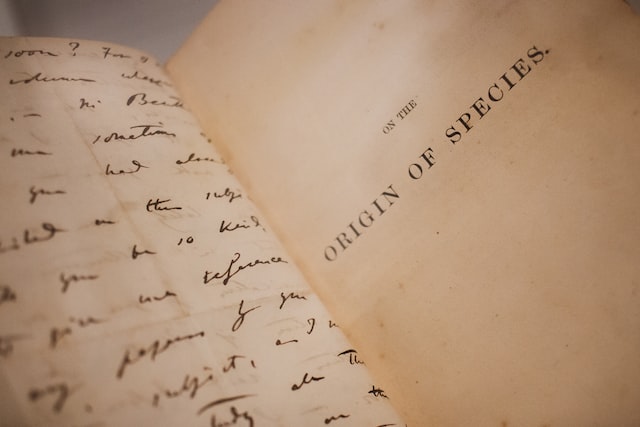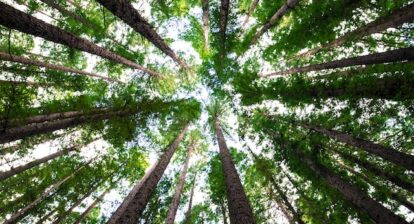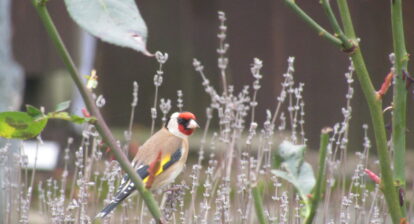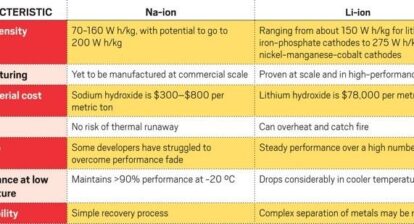Charles Darwin was born on February 12, 1809, so the date is known as Darwin Day. November 24th is World Evolution Day. It is celebrated because a paper was published that changed scientific thinking completely. On November 24, 1859, Charles Darwin published his work: On the Origin of Species by Means of Natural Selection; an account of the greatest story ever told — that of evolution by natural selection. Here is the story.
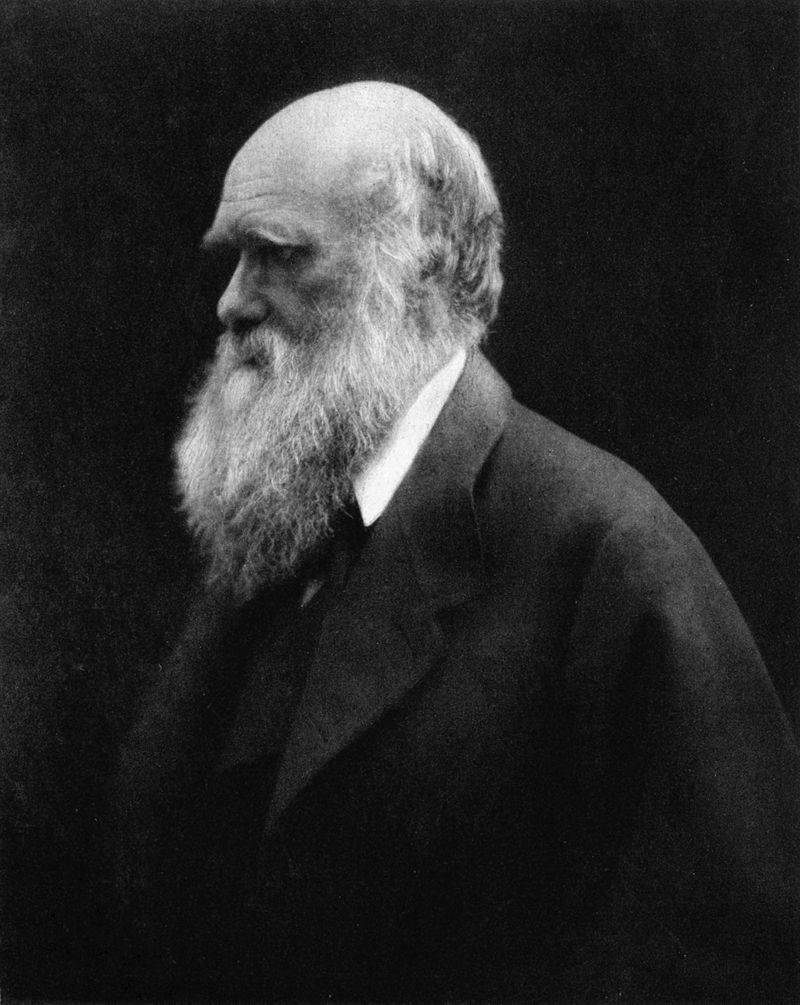
During the Darwin family’s 1868 holiday in her Isle of Wight cottage, Julia Margaret Cameron took portraits showing the bushy beard Darwin grew between 1862 and 1866.
Charles Darwin was a naturalist, geologist and biologist, who was born on February 12, 1809, in Shropshire, England. He belonged to a freethinking, intellectual family; his father Robert was a doctor and his grandfather Erasmus Darwin in addition to being a doctor, was also a key thinker of the British enlightenment. His maternal grandfather was Josiah Wedgewood, founder of the famous Wedgwood ceramic company. Darwin’s mother died when he was only eight years old.
In 1825, he became an apprentice doctor for his father and then went on to medical school at the University of Edinburgh. However, Darwin found the lectures boring and he neglected his studies. Instead, in his second year, he joined the Plinian Society, a natural history group of students from the University. His father was not pleased with him neglecting his studies and packed him off to Christ’s College, Cambridge for a BA, so that he could become a country parson. At Cambridge too he was unconcerned with his courses, and became interested in the popular craze of beetle collecting, which he did zealously and even published his findings. He did manage to complete his education; in fact he did quite well in the final examinations. During his remaining time in Cambridge he read voraciously, including books by astronomer John Herschel and those by another brilliant scientist, Alexander von Humboldt. Darwin wanted to contribute to what at that time was known as natural philosophy and made plans to travel to the tropics to study natural history.

Charles Darwin
Then, his botany professor, Johns Stevens Henslow, of whom he had become a close friend and follower, changed everything when he proposed him as a self funded naturalist aboard the HMS Beagle. The ship was to spend two years charting the coastline of South America. His father objected to this at first but then agreed to fund his trip.
The voyage began in December 1831 and Darwin spent five years on the Beagle, from 1831 to 1836, studying animals in the Galapagos, discovering fossils and observing tribes around Southern America. He kept copious notes of his observations and amassed a collection of specimens, which he often sent off to Cambridge for cataloging and analyzing. He observed seashells in high volcanic rock cliffs in Cape Verde and discovered fossilized bones of huge extinct mammals buried next to seashells in Patagonia.

Voyage of the Beagle 1831 to 1836
On board the Beagle were three natives of Terra del Fuego, which lies between Chile and Argentina. These three people had been captured during the first Beagle voyage and had been educated in England as missionaries. They were now being sent back to convert and “civilize” their tribe. Darwin found them friendly enough but when they reached Terra del Fuego he found the Fuegians there living as what he called “degraded savages”, completely different from those on the Beagle. Then one of the Fuegians on board the ship, who had been given the name Jeremy Button, went back to his old way of life, found a wife and had no desire to return to England.
The observations of fossils, geology and local tribes was making him more and more convinced that humans were interlinked with a shared origin and could all become civilized — that contrary to accepted opinion one group was not better than others. But he also went further and now saw that there was no unbridgeable gap between humans and animals. In 1835, he experienced an earthquake in Chile, noting that the land had been raised — adding to his knowledge of geological events that shaped the Earth.
Darwin is most popular for his observations on the Galapagos islands, where he spent only five weeks. This is where he observed the differences in finches and tortoises, which he used as part of the basis for his theory. However, he failed to collect tortoise shells as evidence of the differences in islands from where they came, although he did eat tortoise as food.
With his ideas developing, Darwin returned home in October 1836. He was already a celebrity among scientific circles because his former tutor Henslow had given some naturalists his geology paper. With his father’s funding he was able to become what at that time was known as a gentleman scientist and went around trying to find experts to catalog and describe his collections

Darwin’s Tree of Life
He was then influenced by Malthus’ Essay on Population and just six months after his return to England, was already writing about species changing into others and he sketched the famous branching evolutionary tree over which he wrote “I think”.
He saw similarities between farmers picking the best stock in selective breeding and nature doing the same. All of this led him to develop his theory of evolution via natural selection, but he spent years researching and writing various other scientific papers especially on the Beagle collections. He also spent eight years studying barnacles. So, for almost 15 years his evolution by natural selection stayed in the background, as what he called his “prime hobby”. However, his work helped him to refine his theory, as he became more and more convinced of its scientific merit.
Darwin was an extremely cautious man and had a fear of ridicule and rejection, which led him to keep his ideas hidden because he wanted to gather as much evidence as he could and refine them as much as possible. He only shared them with botanist Joseph Dalton Hooker in 1844, saying that it was “like confessing to a murder”. However, by July of 1844, he had elaborated his ideas into an essay and had frequently shared them with his other friend, geologist Charles Lyell.
Charles Darwin had begun to develop his theory in 1837 and it would take him over 20 years before he would eventually publish it after Lyell told him of another naturalist, Alfred Russell Wallace, who had drawn similar conclusions. A little bit of digression here. Alfred Russell Wallace is not as famous as Darwin but it must be emphasized that he reached the same conclusions through his work as a specimen collector in Indonesia and Borneo. In my opinion he deserves equal credit.
Once Russell’s idea had reached Darwin and Lyell, they concluded that it was almost exactly the same. Therefore, initially, the theory of evolution by natural selection was introduced in a letter read at a meeting of the Linnean Society, as a joint publication with Alfred Russell Wallace, in 1858. Remarkably, not much interest was generated. Then on November 24, 1859, Darwin published a detailed explanation of his theory in his best-known work, On the Origin of Species by Means of Natural Selection. Unexpectedly, it was extremely popular and the entire stock was oversubscribed when it went to booksellers on November 22, 1859.
It did not arouse as much controversy as was expected. In fact there was a lot of international interest for it, because the concept of evolution had been around for quite a while and had been debated and discussed from the time of the classical Greeks. The age of enlightenment and Britain’s maritime successes had led to new biological discoveries and various evolutionary ideas were constantly being proposed. Therefore, there was a gradual, growing acceptance for it among the public and scientists.
However, this was still a time when the scientific community was closely tied to the Church and there were debates on Darwin’s theory, because even though he had refrained from discussing human origins (only hinting at it), there was much discussion on what this could mean for human creation. The idea of human origins and their shared ancestry with other primates, he put forth in Descent of Man, which was published in 1871.
In 1860, Bishop Samuel Wilberforce (known as Soapy Sam) and Thomas Henry Huxley (known as Darwin’s Bulldog for his vociferous defense and promotion of the theory of evolution), took part in a famous debate. Soapy Sam implied that Darwin’s idea promoted humans being descended from monkeys, by inquiring of Huxley whether he considered himself to be descended from monkeys from his grandfather’s or his grandmother’s side. To which Huxley retorted that he would rather be descended from an ape than a man who misused his gifts.
Which brings us to the idea of evolution itself as it was expounded in On the Origin of Species By Means of Natural Selection. The book introduced the scientific theory that living populations evolve over generations through natural selection. It proposed that the diversity of life that we see on the planet arose by common descent through a branching pattern of evolution. What this means is that evolution occurs when natural selection (which includes sexual selection), results in certain characteristics becoming either more common or rare in a given population. The way Darwin explained this simple but powerful concept is that individuals best adapted to their environments, are more likely to survive and reproduce. If there is variation between them and that variation is heritable, this will result in a selection of individuals with the most advantageous variations. The heritability of variations and the reproductive success of individuals will result in a particular population progressively evolving. And here is the kicker: populations that evolve to be sufficiently different, eventually become different species. All the evidence that Darwin collected on his voyage on the Beagle and subsequent research, experimentation and correspondence with other scientists was included in the book.
Although he understood heritability, he did not know about the science of genetics, so could not say how the given characteristics were passed on. When genetics became more and more understood and the structure of the DNA was revealed in the mid-20th century, evolution was confirmed as the only scientific explanation for the diversity of life on Earth. As our knowledge of genes gets better and better, more information is added on but the basics remain the same. We now understand that variability within and among species can be due to mutations, gene flow and genetic recombination. Mechanisms such as natural selection, gene migrations and genetic drift act on this variability, so that characteristics are either passed on, or they disappear.
Darwin’s idea has withstood the test of time, experimentation and evidence for over a century and a half. There is no doubt now that evolution is the unifying theory of life sciences and is the only one that explains the diversity of life on this planet.
One thing is clear however. Darwin did NOT say that we are descended from monkeys, as Soapy Sam had implied. This idea has persisted over the years and is frequently bandied about by those who do not understand evolution. What he had established is that all species have descended from common ancestors; that the branching patterns of evolution were a result of natural selection, where species struggle for existence and pass on characteristics, similar to the effect of artificial selection in domestic breeding.
He also did not initially use the phrase “survival of the fittest”; it was coined by the philosopher Herbert Spencer, who extended evolution into the realms of society and ethics. Darwin did use the phrase in the republication of On the Origin of Species in 1869, to mean that nature favors the best adapted individuals, not necessarily the strongest.
He spent the last decade or so of his life finalizing his book on worms, which he had been studying on-and-off for 40 years. In his personal life he had married his cousin Emma and had ten children, two of whom died in infancy. Another child Annie died at the age of ten. He was very devoted to his children and this can be seen from the doodles and cartoons they left on the draft of On the Origin of Species manuscript.

Doodles on On the Origin of Species by Natural Selection – American Museum of Natural History / Cambridge University Library

Doodles on On the Origin of Species by Natural Selection – American Museum of Natural History / Cambridge University Library

Doodles on On the Origin of Species by Natural Selection – American Museum of Natural History / Cambridge University Library
Darwin died on April 19, 1882, at his family home, Down House, in Kent and is buried at Westminster Abbey. He has left behind a body of work so immensely beautiful, it still continues to inspire to this day. More than 120 species and nine genera of animals and plants have been named after him.
Here is how he ended On the Origin of Species by Means of Natural Selection: “There is grandeur in this view of life, with its several powers, having been originally breathed into a few forms or into one; and that, whilst this planet has gone cycling on, according to the fixed law of gravity, from so simple a beginning, endless forms most beautiful and most wonderful have been, and are being, evolved.”
